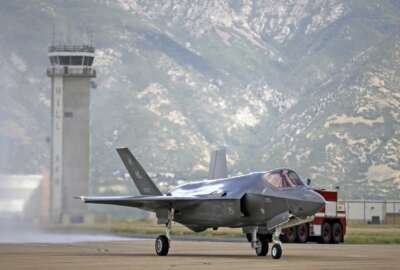

The Defense Department is capitalizing on findings in its first audit, but it will be years before opinions are clean.
Best listening experience is on Chrome, Firefox or Safari. Subscribe to Federal Drive’s daily audio interviews on Apple Podcasts or PodcastOne.
The Defense Department completed its first full audit last year and it went pretty much as expected: most areas of the military failed.
But the Pentagon is trying to improve, just don’t expect it to happen overnight. David Norquist, acting deputy Defense secretary, told the House Budget Committee Monday that he thinks seven of the 21 agencies may come up with a clean audit in 2020.
“We hope the original five will continue to get a clean audit,” Norquist said. “There are potentially two more agencies that could move up to a clean opinion. I’m watching that very closely. What I’m expecting to happen over the next several years is some of the agencies that went under audit for the first time will start to turn to a modified opinion and you will see that over some period of time. This will not be quick.”
Norquist defined the modified audit opinion as “you are ok, but…” meaning it’s partially clean, but there are still pervasive issues that need to be fixed. Norquist said that would be about halfway to a clean opinion.
One tool Norquist said he’s trying to use to spur agencies to clean up their finances is to track the notices of findings and recommendations (NRFs) to make the audit more manageable.
The Pentagon currently has 2,410 NRFs it needs to work on.
“In order to get to a clean opinion you have to reduce those NRFs to a small amount,” Norquist said. “What we’re tracking is, rather than an agency simply passing or failing, how are you doing on reducing those more than 2,300 NFRs? We have a database to track them; we have people who are accountable.”
Norquist said he plans to send a report to Congress in a couple years on the progress on NRFRs. That way Congress can call to the carpet agencies that are not making progress, instead of purely relying on the “pass-fail” metric.
At the release of the audit in January, Norquist announced the the creation of the NRF database.
“The wide visibility and use of this tool across the department will reduce duplication of efforts, facilitate the sharing of lessons learned and best practices, and help maintain accountability,” Norquist wrote in January. “The tool will also help us to track the number of auditor findings closed, which will be the benchmark used to measure our progress towards achieving a clean audit opinion.”
Norquist said DoD is prioritizing the areas that directly affect the readiness of the force. Real property, inventory and IT security top the list.
DoD is already making progress on inventory.
“We discovered there are certain facilities where what they thought they had in inventory did not match what they had in inventory. And if your responsibility is spare parts for airplanes, the accuracy of that inventory matters,” Norquist told the Senate Armed Services Committee earlier this month.
For example, a stockpile of missile motors was erroneously listed as unserviceable at Utah’s Hill Air Force Base, even though they were in perfectly good condition. Using those instead of ordering new ones saved the Air Force $53 million.
While the audit is informing DoD of past purchases it forgot about, it’s also informing the Pentagon on how it will spend money in the future.
Norquist said DoD is changing the way it looks at contracts after receiving the audit.
“I’ll use IT as an example,” Norquist said. “When you buy licenses for IT you pay a certain amount if you are buying one and then slightly less if you are buying 10 and so forth. One of the things we are trying to do is make sure we have visibility across all the licenses so we can consolidate them. When you purchase them in bulk you not only get a lower price, but you get IT security improvements because you know where they are and how they are deployed.”
IT issues accounted for nearly half of the audit’s failures.
DoD is using the same category management approach in other areas like prescription drugs.
While finding $53 million in spare parts or adding some savings in bulk buying is helpful, it pales in comparison to the $750 billion DoD is requesting for 2020.
Some lawmakers found it hard to reconcile giving DoD a budget that large when less than one quarter of the budget comes back clean in an audit.
“Should taxpayers throw more money in a department unable to combat this kind of waste, fraud and abuse or even understand how much it’s spending?” asked Rep. Barbara Lee (D-Calif.). “In terms of being prudent about taxpayer dollars, one would think we would stop the increase minimally of funds going into the Pentagon until at least these areas are accounted for. Why would we continue to give you more money and more money?”
Issues over the audit may add additional fodder in the fight over the topline defense budget in the coming months.
Copyright © 2024 Federal News Network. All rights reserved. This website is not intended for users located within the European Economic Area.
Scott Maucione is a defense reporter for Federal News Network and reports on human capital, workforce and the Defense Department at-large.
Follow @smaucioneWFED

